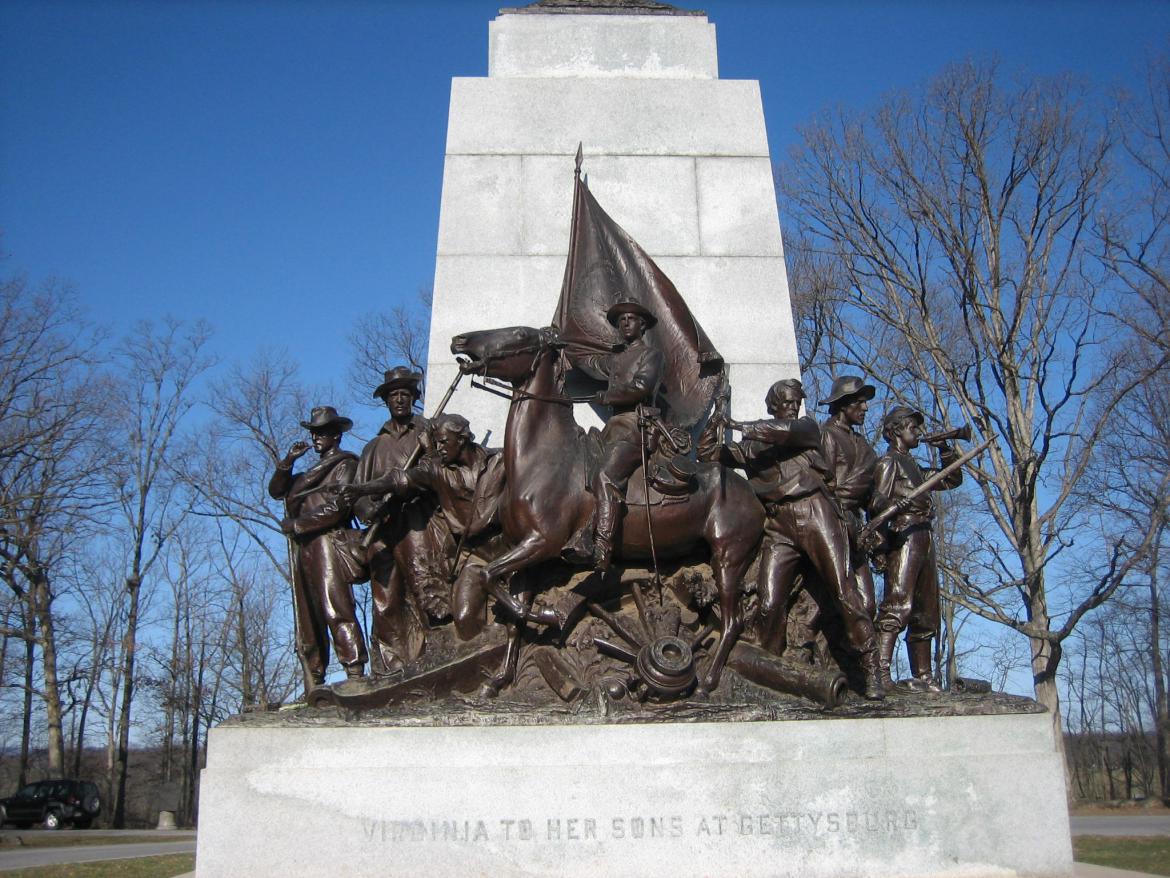The Virginia State Monument on West Confederate Avenue. It was dedicated on June 8, 1917, but work had begun on the monument as early as 1913, as depicted in some photographs of the 50th anniversary of the battle. This view was taken from the southeast facing northwest at approximately 9:00 AM on Sunday, March 23, 2008.
On Easter Sunday morning the Gettysburg Daily photographed the Virginia State Memorial on Seminary Ridge. The Virginia monument was the first of the Confederate state monuments to be placed at Gettysburg. The monument honors the “common” soldiers from Virginia as well as Army of Northern Virginia commander Robert E. Lee on his horse Traveler.
The monument was designed and sculpted by Frederick William Sievers (1872-1966). General Lee and his horse, Traveler are at the top of the monument. Statues of the common soldiers of the Confederacy are at the base of the monument. The material used is Westerly Granite and standard bronze. The total cost was $50.000. View from the northeast facing southwest at approximately 9:00 AM on Sunday, March 23, 2008.
The base of the monument is 28 feet wide (north to south), and 32 feet six and a half inches long (east to west). The group of soldiers at the bottom are five feet wide (east to west), and 18 feet long (north to south). The tip of the Virginia flag is 16 feet tall. Overall, the monument is 41 feet in height. View from the north facing south at approximately 9:00 AM on Sunday, March 23, 2008.
The monument is placed along the Confederate line at one of the locations where Lee watched Pickett’s Charge on July 3, 1863. He was also at the “point of woods” approximately 200 yards to the right or southeast of the monument. View is from the north facing south at approximately 9:00 AM on Sunday, March 23, 2008.
Of the seven human figures at the base of the monument, the cavalry bugler and the color bearer are boys, representing the youth of the army. The others show the occupations of these southern soldiers before the war. The soldier on the left preparing to load his weapon (tearing a cartridge) was a professional man in civilian life. Next to him, holding the musket across his chest was a mechanic. The man firing the pistol under the horse was an artist. The man to the right (north) of the horse was a businessman. To the left of the youthful bugler was a farmer. View from the east facing west at approximately 9:00 AM on Sunday, March 23, 2008.
Frederick Sievers used photographs and a life mask to capture the features of General Lee’s face. Those who knew Lee, and who were living at the time of the monument’s dedication, thought this sculpture was the best likeness of the General. Traveler’s bones were on display in Lexington, Virginia, where Lee had settled before his death. Sievers found a live horse that matched the size and shape of the bones as a model for Traveler. View from the northeast facing southwest at approximately 9:00 AM on Sunday, March 23, 2008.






